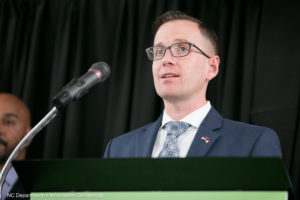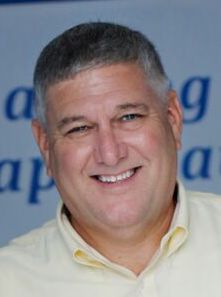
By Angela Lindsay
Many people rely daily on cell phones, laptops, activity trackers and smart watches. However, not everyone has access to the technology that has become increasingly necessary to keep up with and compete in our rapidly advancing society.
According to DigitalCharlotte.org, more than 14 percent of households in Mecklenburg County (almost 56,000 households) have no internet access at all. About seven percent (or 26,000 households) in the county have only mobile internet or dial-up service. Such disparities create what is known as a digital divide. Defined by Techtarget.com as a gap between demographics and regions that have access to modern information and communications technology and those that don’t, or those that have restricted access, a digital divide often reflects economic and social inequalities, which recent research has shown that Charlotte, in particular, suffers from generationally. However, there are agents at work trying to combat that reality in the Queen City.

“When we intentionally or unintentionally widen that gap or don’t do anything to close it, it has a massive impact on our community’s ability to be resilient and vibrant and healthy and happy and equitable in so many ways,” says Bruce Clark, executive director at Digital Charlotte.
Launched in 2011, Digital Charlotte was developed as a component of the Queens University of Charlotte’s Knight School of Communication master plan to strengthen digital and media literacy in Charlotte. Digital Charlotte’s mission is to empower organizations to deliver digital inclusion resources to their communities, and is based on the premise that digital literacy skills are instrumental to creating educational and economic opportunities for all.
In addition, the Charlotte Digital Inclusion Alliance (CDIA), of which Clark is also project manager, is a collaboration of 13 organizations committed to reducing the digital divide in Mecklenburg County from 19 percent to nine percent by 2026, by developing a digital inclusion playbook of focus areas: access, technology, digital literacy, standards and policy, advocacy and opportunity.
“I believe creating a pathway for somebody to be included in the digital world we live in today is necessary to the type of rebuilding we need to do, that creates access to information to creation of content to the telling of one’s own story to changing the narrative,” Clark says.
A 2016 survey conducted by the Pew Research Center reflects a correlation between income and internet users, with 75 percent of adults making under $30,000 reporting that they use the internet, while those making $75,000 or more used the internet at nearly 100 percent. Home broadband usage (loosely defined as internet access that is always on and faster than the traditional dial-up method) showed an even bigger disparity, with usage by those making $75,000 remaining around 100 percent and those making under $30,000 plummeting to just over 50 percent. Age, education level, race and age also proved to be factors in the survey, with percentages generally trending higher among younger generations, those with higher educated and Caucasian adults in the home.
In Charlotte, access to online and digital resources is critical, as 80 percent of job opportunities are posted exclusively online and the General Educational Development (GED) examination is now offered only online. Also, seven in 10 teachers assign homework requiring access to the internet—a fact that prompted a reaction from one student that has now touched the lives of thousands more.

“She came up with the perfect question at the perfect time,” says Pat Millen, whose daughter, in middle school at the time, came home one day and told him that her class’s school assignments assumed that all students had computers at home, when she was aware that wasn’t the case.
Out of her concern, the idea for Eliminate the Digital Divide (E2D) was born. The mission of E2D is to ensure that all students have affordable access to essential at-home technology, and digital literacy training to support academic success and prepare students for college, careers
, and beyond. Beginning in 2013, E2D has already worked successfully with 140 schools within the Charlotte Mecklenburg School (CMS) system.
“First and foremost, we’re here to help eliminate the digital divide for Charlotte Mecklenburg School students who are incapable of doing their schoolwork because they don’t have access to technology at home,” explains Millen, president and cofounder of E2D.
It all began with E2D trying to find laptop solutions for 54 families at a single elementary school in Davidson in August 2013, eventually ensuring that every school student in Davidson had access to a computer at home. From there, the group assisted every elementary, middle and high school in Cornelius, followed by tackling the need in five of Charlotte’s high-poverty, Title I high schools. To date, the group has been able to assist more than 5,000 families, with plans to help another 5,000 families this year.
“The short-term goal is to eliminate the digital divide for 100 percent of CMS students and families by the end of 2019,” says Millen. “It’s an audacious goal, but it’s a worthy goal. So, we’re going to give it our best shot.”
E2D refurbishes laptops donated mainly by corporations that are no longer using them, and distributes them to students in need. Much of this work is performed in its Re-Image CLT labs (currently located on the campuses of West Charlotte, South Mecklenburg and Garinger high schools) by high school students, who are hired as technicians following an intensive application process. Those selected receive paid training, and then begin working in the labs after school for three hours a day.
Those who receive these computers must live below the poverty line. E2D manages the distribution by working with CMS to identify where the need exists. It costs about $150 for E2D to rebuild the computers. While community donations cover $90, the families who receive the computers each pay $60 for their computer, which comes with brand-new software and a six-month warranty. The payoff for Millen and his team has been just as rewarding.
“When I get to actually spend time the student who’s getting a computer for the first time, and you see the pure joy on their faces . . . if I could bottle up that joy, I could sell it to anybody that was in a bad mood . . . That day that single kid gets that computer and realizes, ‘I can do it now’ . . . That is why we all love our jobs, because we know that the work that we do is very likely transforming a student’s life.”
While Charlotte may have its struggles with economic mobility and generational poverty, E2D is helping create a different kind of cycle. According to Millen, at least 75 percent of the kids who work in the labs were originally E2D recipients, who became proficient enough on their computers to be hired to work in an E2D lab to build computers for the rest of their community.
“That is a beautiful, beautiful ecosystem,” he says.
